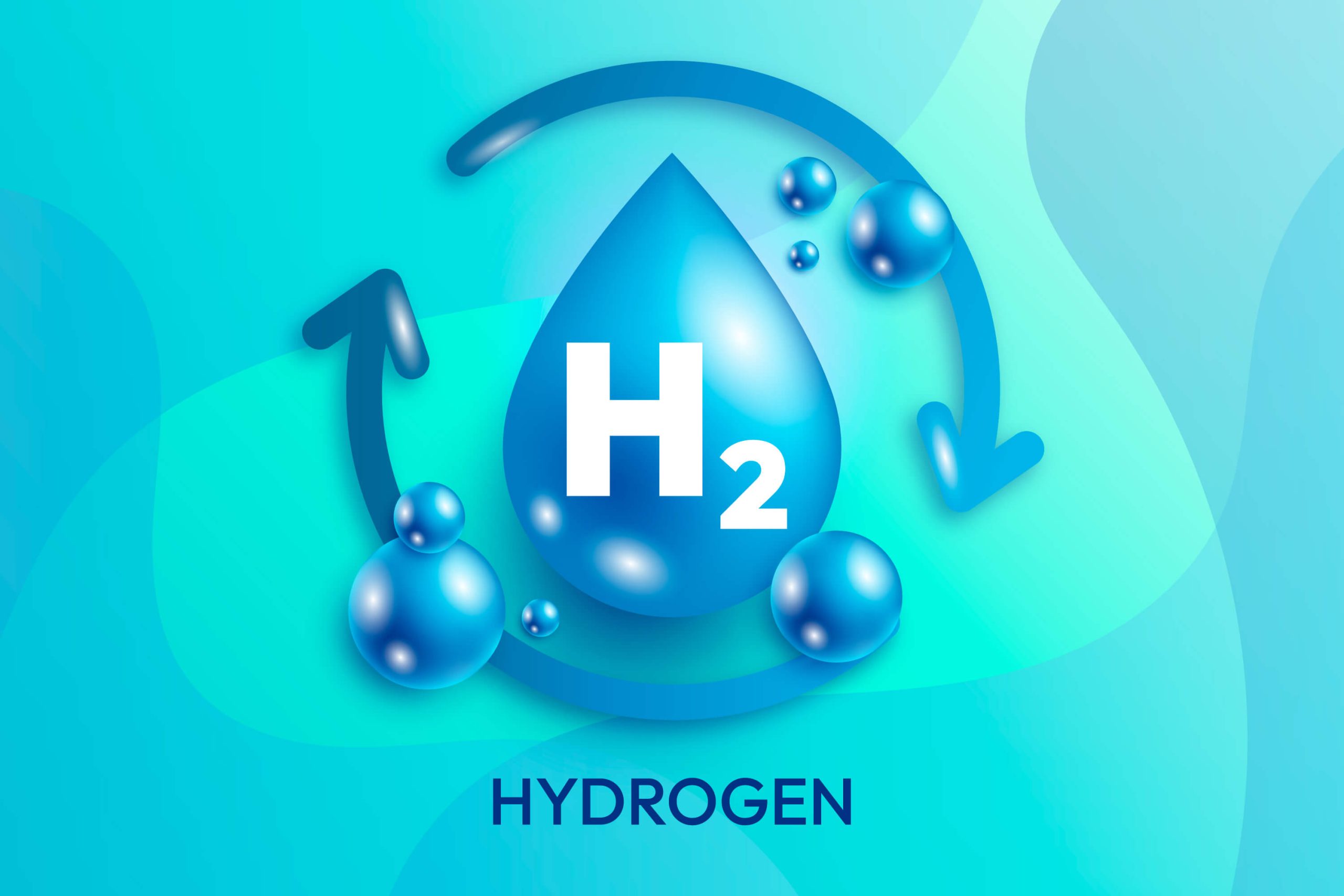Green hydrogen is gaining significant attention as a promising solution for a sustainable and clean energy future. As the world seeks alternatives to reduce its reliance on fossil fuels and combat climate change, green hydrogen has emerged as a versatile and eco-friendly energy carrier. In this blog, we will explore various applications of green hydrogen derivatives, shedding light on its role in shaping a cleaner and more sustainable world.
The Rise of Green Hydrogen
What is green hydrogen? Green hydrogen is a clean and sustainable fuel, in contrast to its more popular counterpart, grey hydrogen, which is created from natural gas with high carbon emissions. Its manufacturing is reliant on renewable energy sources, notably wind and solar power, to electrolyze water molecules into hydrogen and oxygen.
If widely adopted, the applications of green hydrogen has the potential to cut up to 830 million tons of carbon emissions annually in Europe alone, contributing to substantial environmental benefits.
At a never-before-seen rate, the green hydrogen industry is expanding. It might satisfy up to 24% of the global energy demand by 2050, greatly lowering carbon emissions. Green hydrogen is being used by industries to reduce their high carbon emissions and to lessen their impact on the environment. With Green Hydrogen, up to 830 million tons of carbon emissions may be avoided each year in Europe alone.
Hydrogen fuel cells are gaining popularity as a green substitute in the transportation industry. According to experts, the market for hydrogen fuel cell vehicles could grow to a stunning 10 million units by 2030.
The ability of green hydrogen to store energy is one of its most significant benefits. Global hydrogen production capacity increased to 70 million tons in 2020, with an emphasis on assisting energy storage initiatives. Green hydrogen isn’t just useful for businesses; it can also be used in homes and buildings for heating, energy production, and as a standby power source when the grid goes down. Worldwide, there are significant investments being made in the green hydrogen sector, with Germany, Japan, and Australia taking the lead.
A sustainable future is being paved through green hydrogen. As technology advances and economies of scale come into play, it promises to be a pivotal player in mitigating climate change and fostering a cleaner, greener world.
The different applications of green hydrogen in our lives are:
1) Transportation-
One of the most promising applications of green hydrogen is in the transportation sector. The usage of green hydrogen in this sector is as a fuel for various modes of transport, including cars, buses, trucks, trains, and even ships and airplanes. Unlike conventional fossil fuels, the combustion of green hydrogen produces zero greenhouse gas emissions, making it a crucial component of decarbonizing the transportation industry.
- Hydrogen Fuel Cell Vehicles- One notable application is hydrogen fuel cell vehicles (FCVs). These vehicles use a fuel cell to convert green hydrogen into electricity, which then powers the vehicle’s electric motor. FCVs offer long driving ranges and rapid refueling, making them a compelling alternative to traditional gasoline and diesel vehicles. Companies like Toyota, Honda, and Hyundai have already introduced hydrogen FCVs to the market.
- Public Transport- Many cities worldwide are exploring the use of green hydrogen-powered buses. These buses emit only water vapor and are significantly quieter than their diesel counterparts. Additionally, hydrogen trains are being developed to provide a clean and efficient means of rail transportation.


2) Industrial Processes-
Green hydrogen finds extensive use in various industrial processes, helping reduce emissions in sectors that have traditionally been heavy polluters. Some key applications of green hydrogen include:
- Green hydrogen for Refining- The petroleum refining industry relies heavily on green hydrogen for removing impurities from crude oil and producing cleaner fuels. By switching to green hydrogen, refineries can significantly reduce their carbon footprint while maintaining their crucial processes.
- Ammonia Production- Ammonia is a key component in fertilizers, and its production is responsible for a significant portion of global greenhouse gas emissions. Green hydrogen can be used to produce ammonia, transforming the fertilizer industry into a more sustainable and environmentally friendly sector.
- Steel Production- Traditional steel production methods are energy-intensive and emit substantial amounts of carbon dioxide and green hydrogen here is a cleaver option as it is clean and an efficient reducing agent in the production of iron and steel, reducing emissions and promoting sustainability in this vital industry.
Also Read: Green Hydrogen Uses
3) Power Generation-
Green hydrogen plays a pivotal role in renewable energy storage and power generation. It can be used in various ways to complement and enhance the capabilities of renewable energy sources such as wind and solar.
- Grid Balancing- Green hydrogen can also be used for grid balancing, providing a source of dispatchable power to meet sudden increases in demand or compensate for fluctuations in renewable energy output.
- Power Plants- Hydrogen can be burned in gas turbines to generate electricity, providing a reliable and low-emission source of power. Power plants equipped with hydrogen combustion technology can produce electricity with minimal environmental impact.


4) Residential and Commercial –
Another application of green hydrogen is in the residential and commercial heating sector. Hydrogen can be used for space heating and water heating, offering a clean and efficient alternative to natural gas.
- Hydrogen Boilers– Hydrogen boilers, which operate similarly to natural gas boilers, can provide central heating and hot water for homes and businesses. They emit only water vapor when combusting hydrogen, making them an environmentally friendly choice for heating.
Conclusion
In conclusion, to the question of the different applications of green hydrogen is that, it has a wide range of applications across various sectors, making it a crucial player in the transition to a more sustainable and clean energy future. From transportation and industrial processes to power generation and residential heating, the versatile nature of green hydrogen allows it to address multiple environmental challenges simultaneously. As research and development continue to advance, we can expect to see even more innovative uses for green hydrogen emerge, further contributing to a greener planet and a brighter future for all.
Frequently asked questions about Green Hydrogen Usage
1) Can green hydrogen be used as a fuel of the future?
Ans: Totally, green hydrogen is ready to be a critical fuel of the future. Created utilizing environmentally friendly power source like hydro, it’s a carbon-neutral energy transporter. Green hydrogen in areas like transportation, industry, and domestic use, offer an economical option in contrast to petroleum products. As the world endeavors to diminish ozone harming substance discharges and battle environmental change, green hydrogen’s true capacity is evident.
2) Can green hydrogen replace petrol?
Ans: Although green hydrogen has a lot of potential as a clean energy source, it would take major infrastructure development, cost reductions, and breakthroughs in hydrogen fuel cell technology before it could completely replace petrol. For some applications of green hydrogen, it’s a promising substitute, but overcoming logistical and technical difficulties would be necessary for a full replacement.
3) Is green hydrogen used for electricity?
Ans: Certainly! Green hydrogen can be transformed into electricity or synthetic gas and used for commercial, industrial or mobility purposes.









